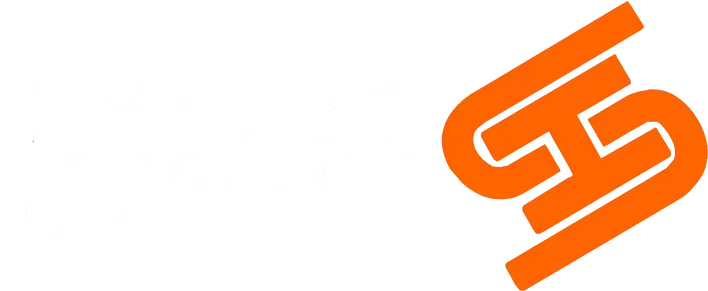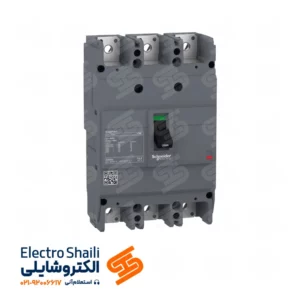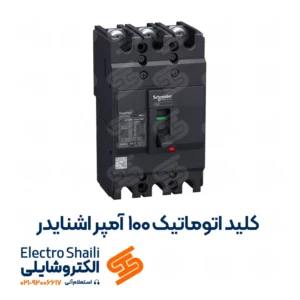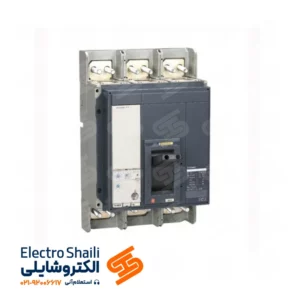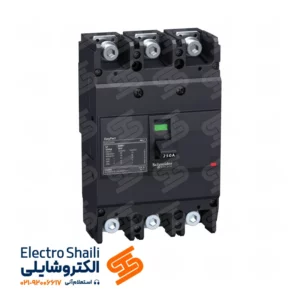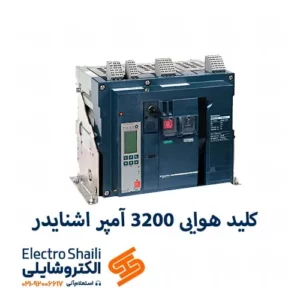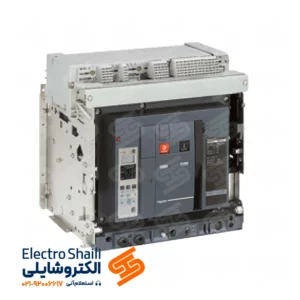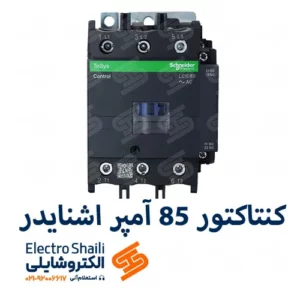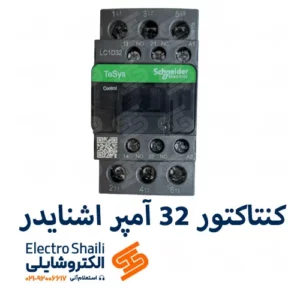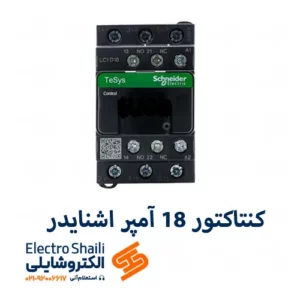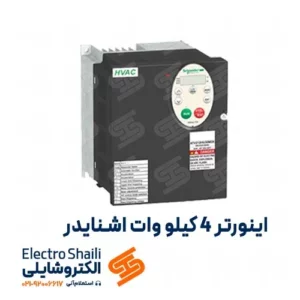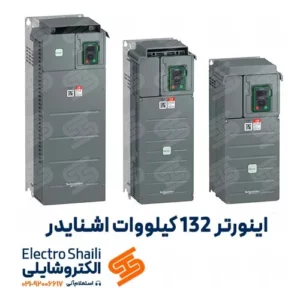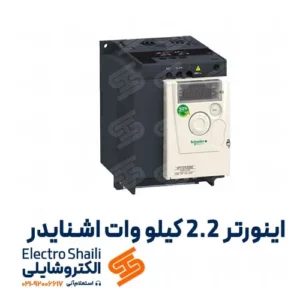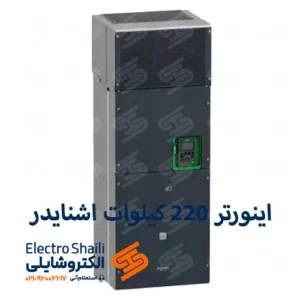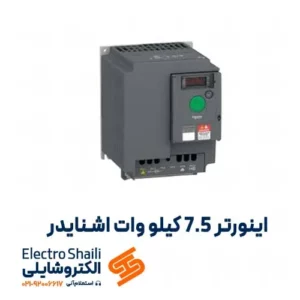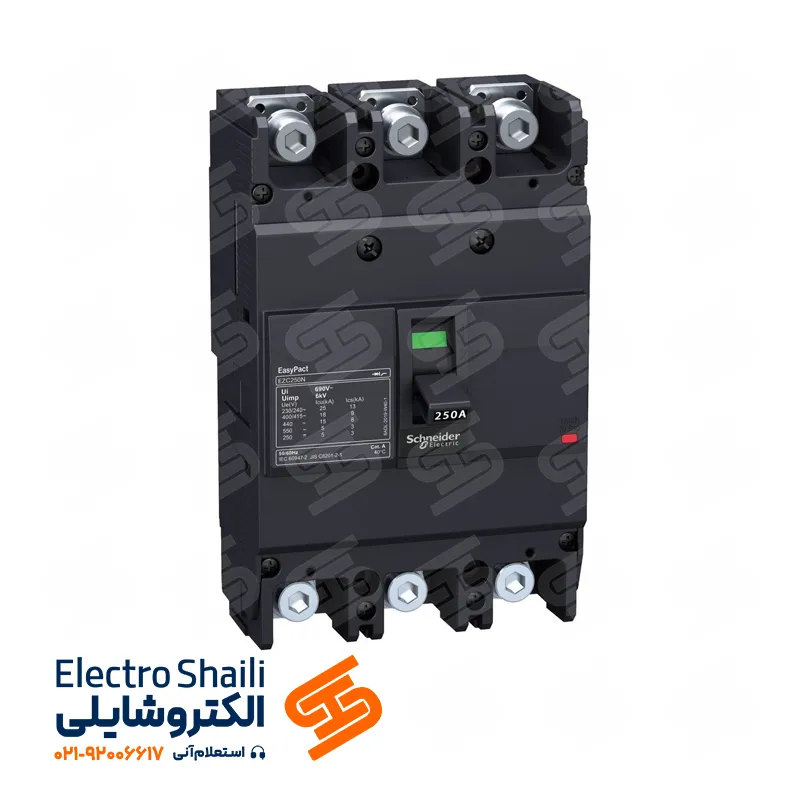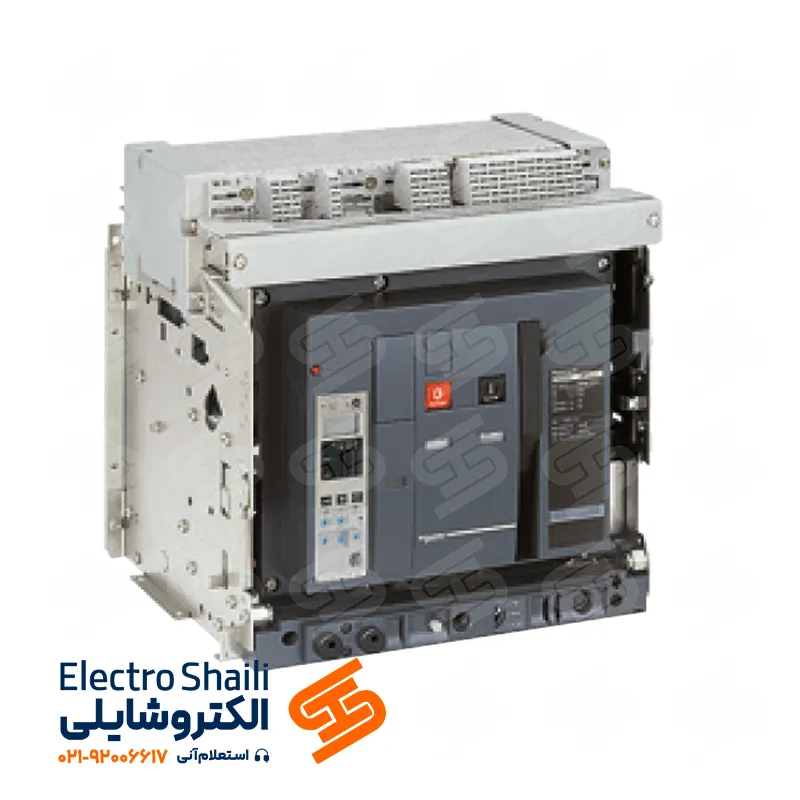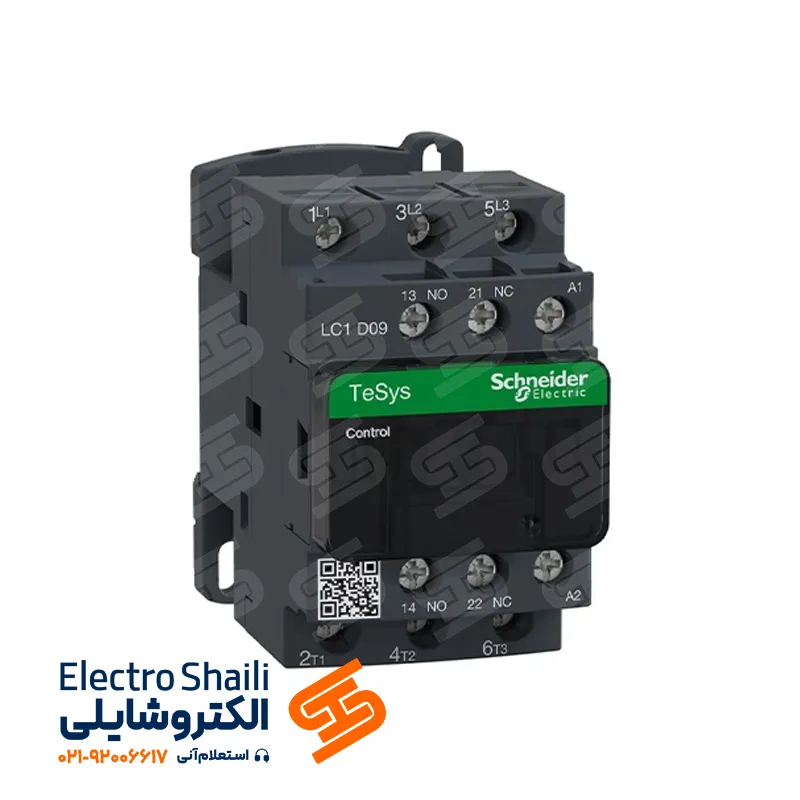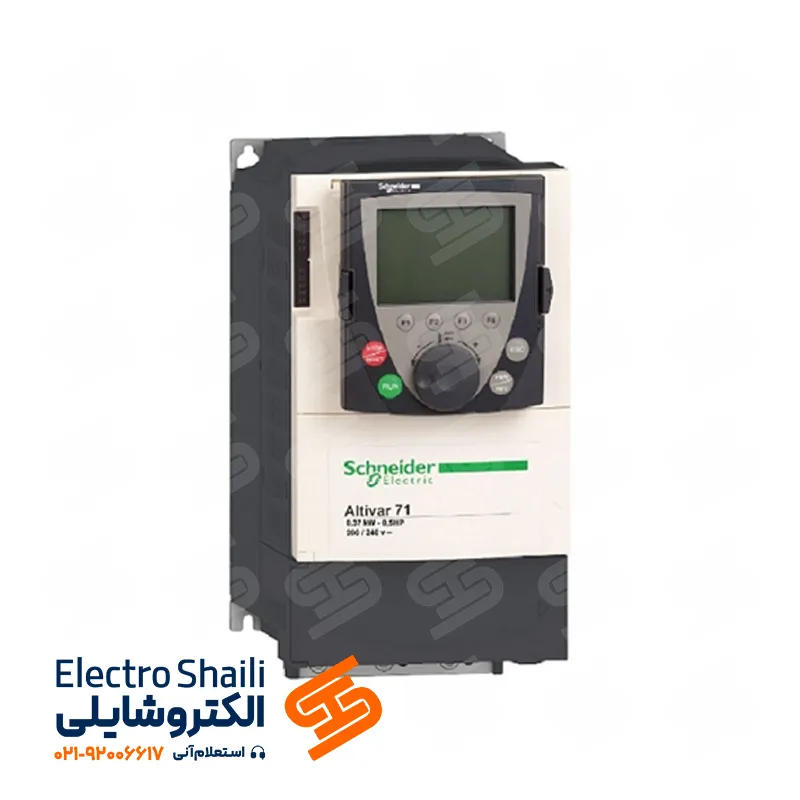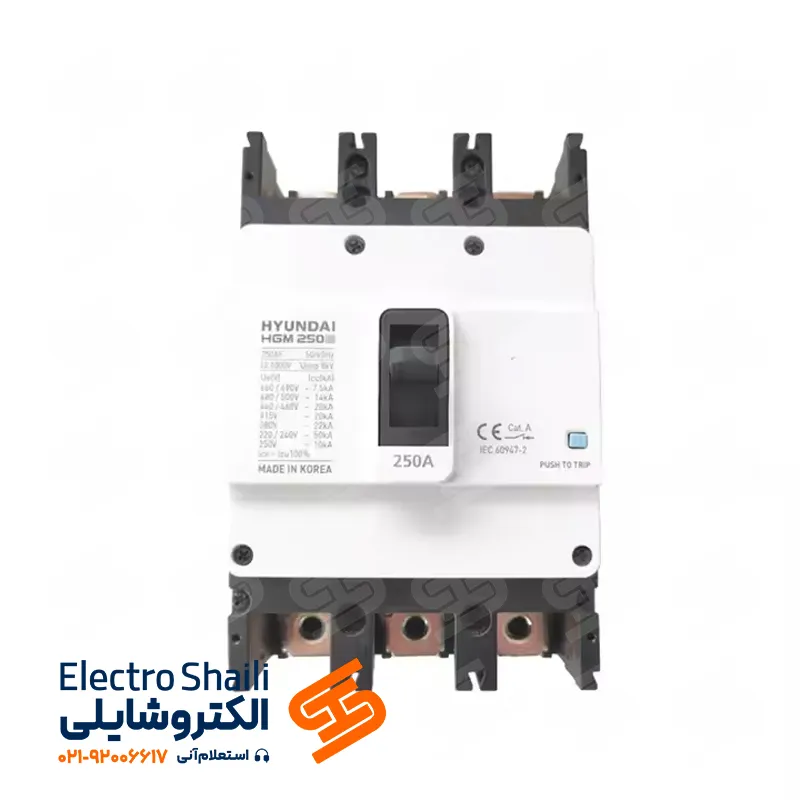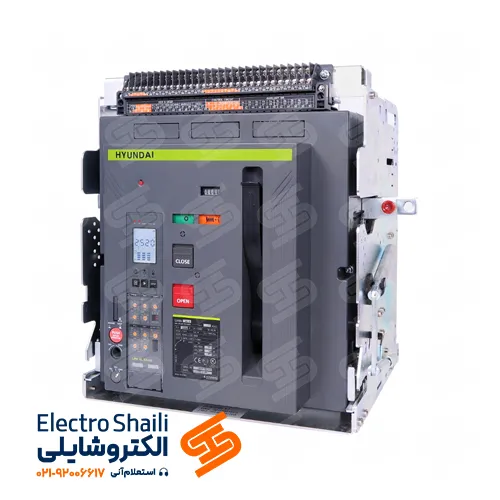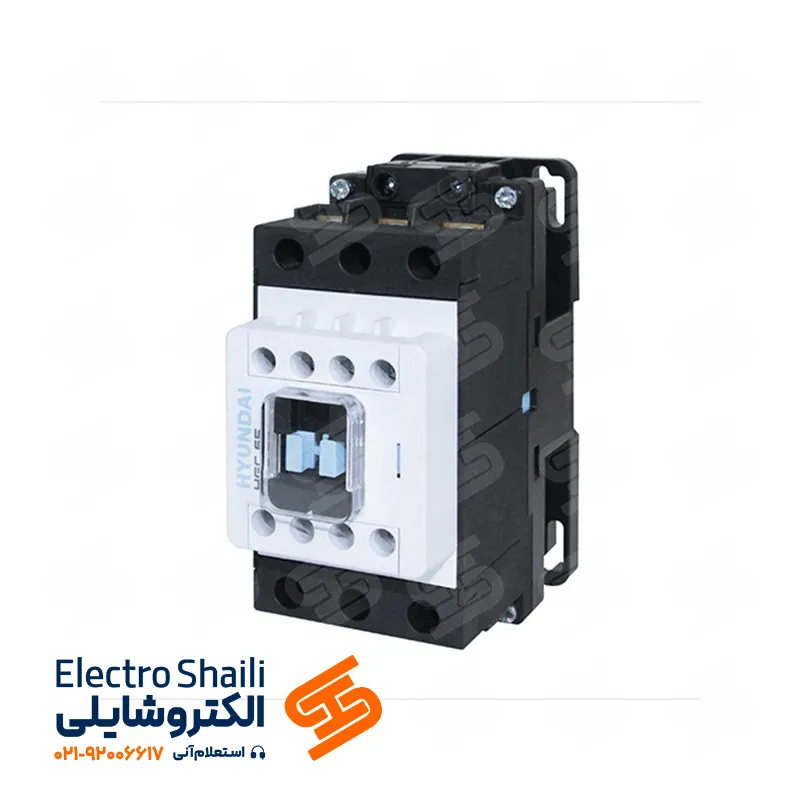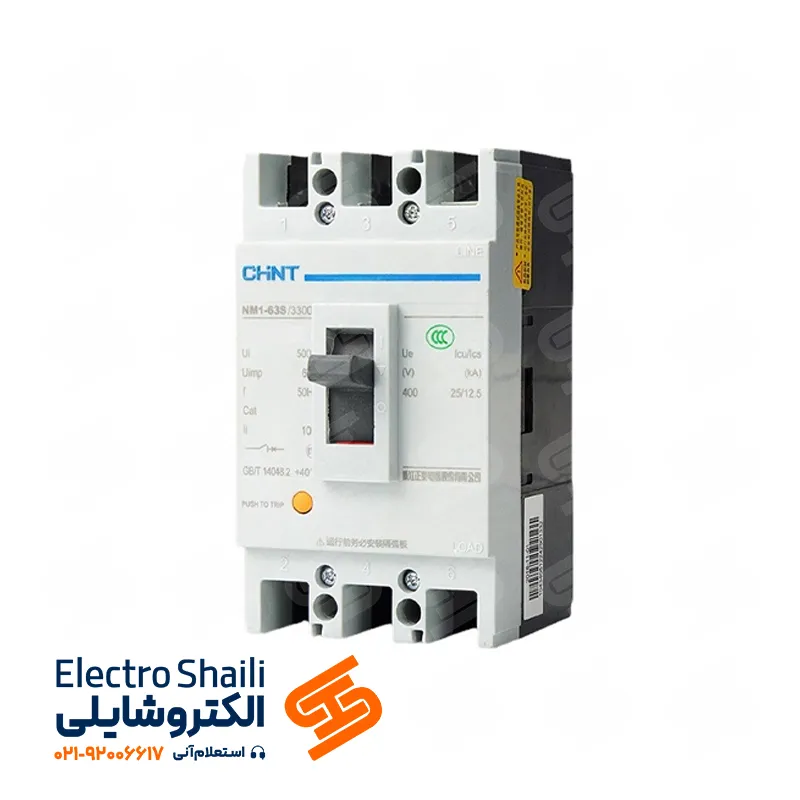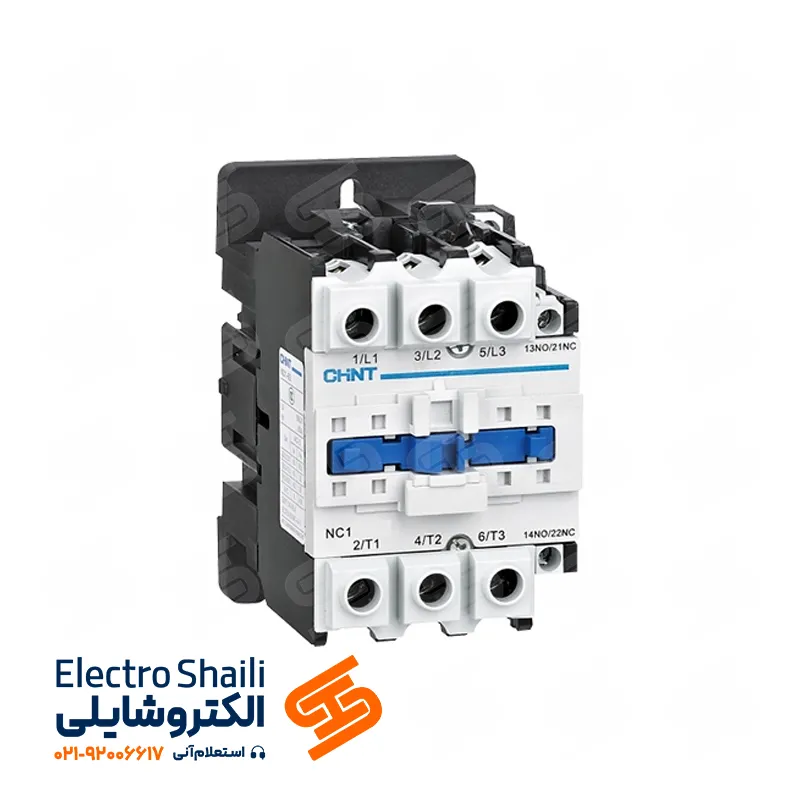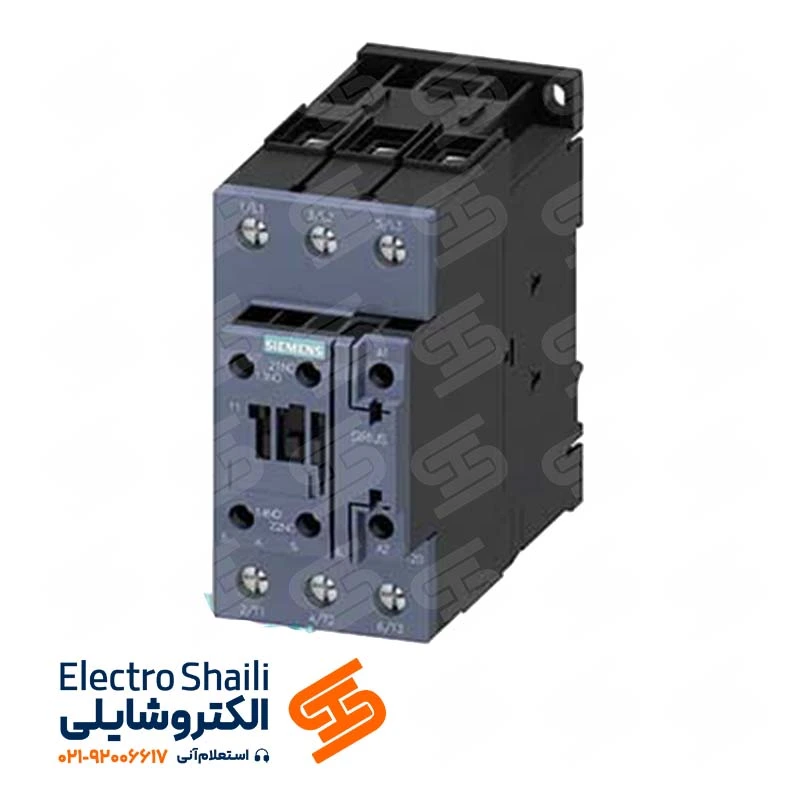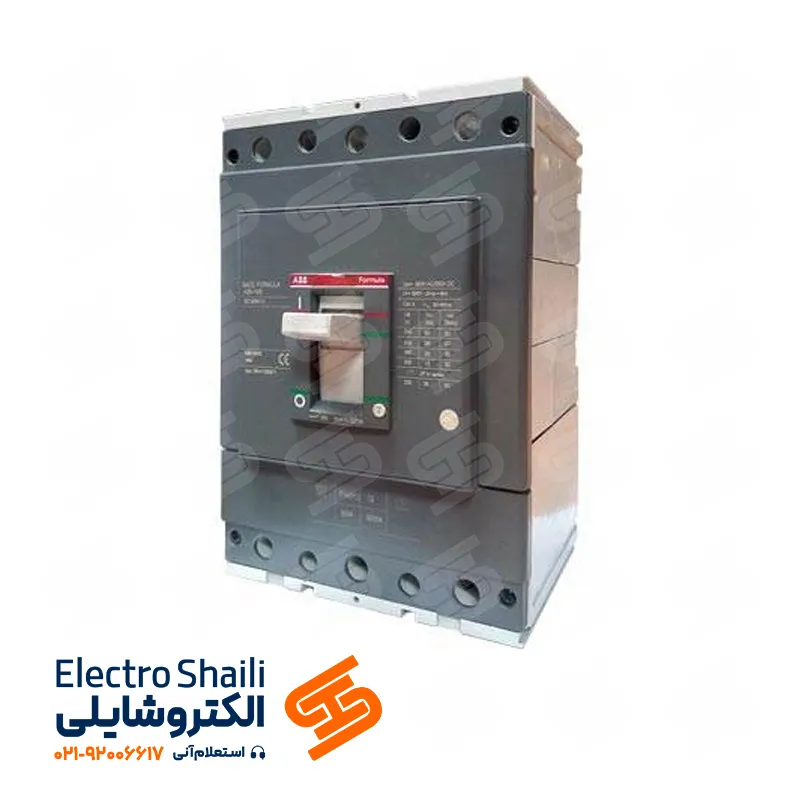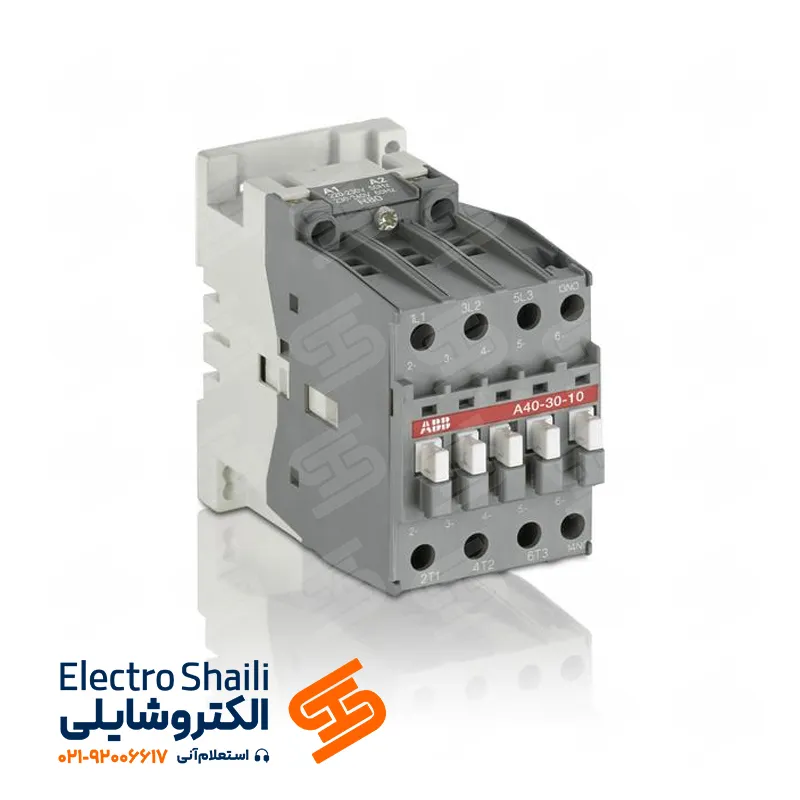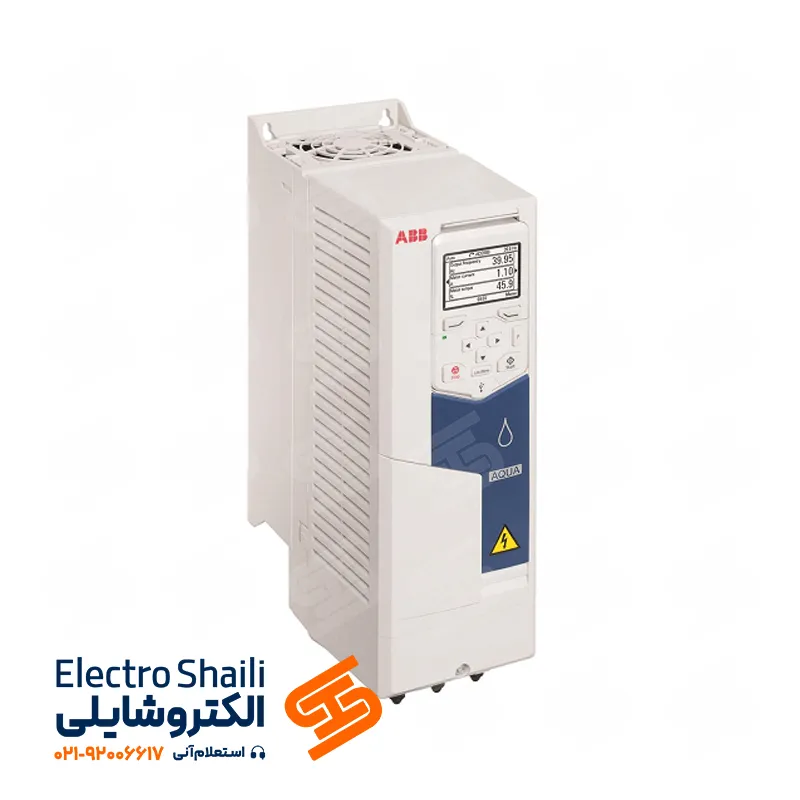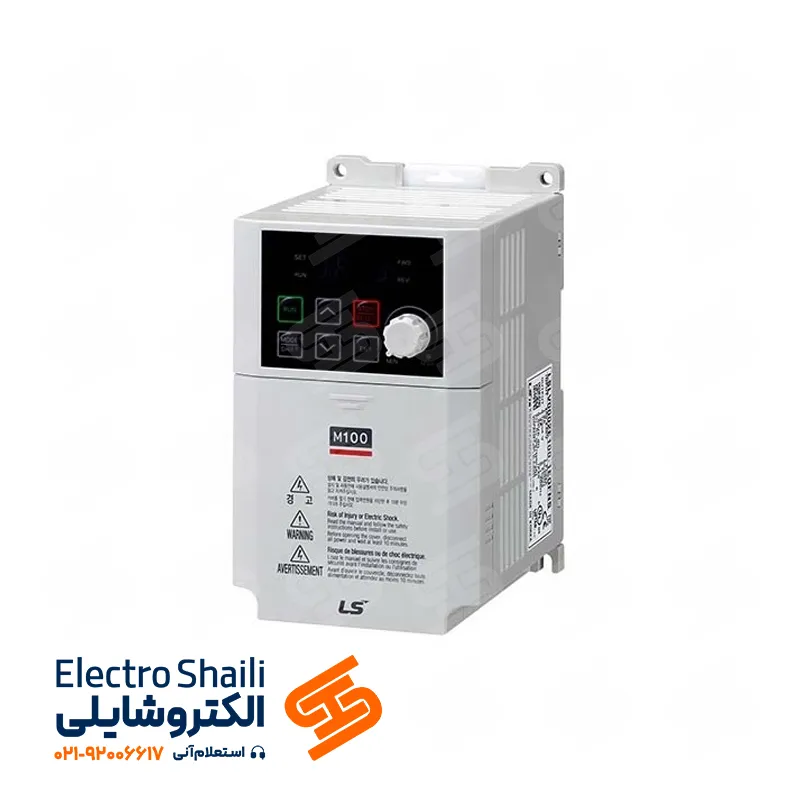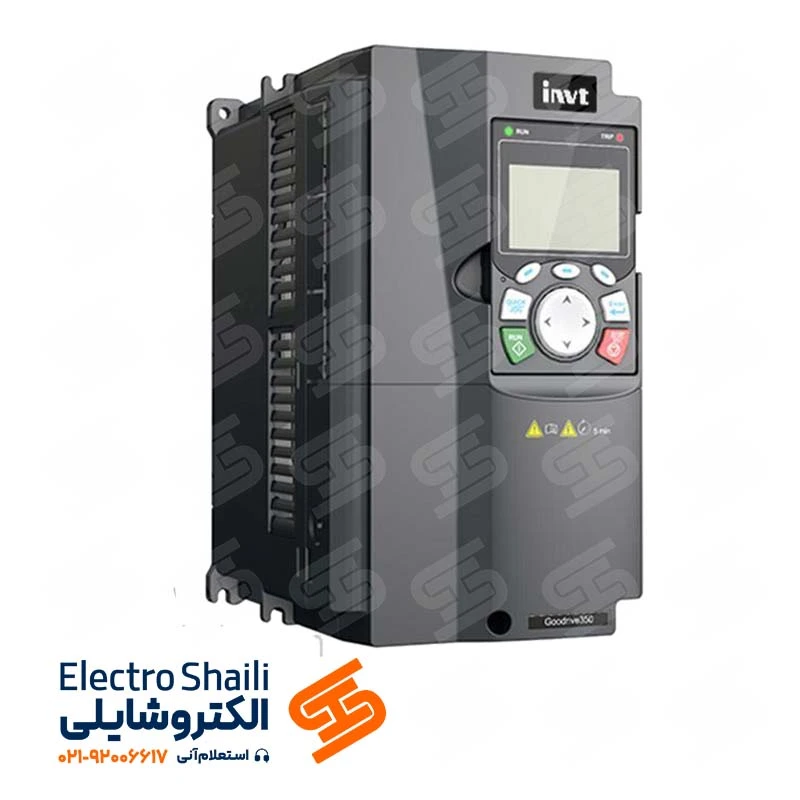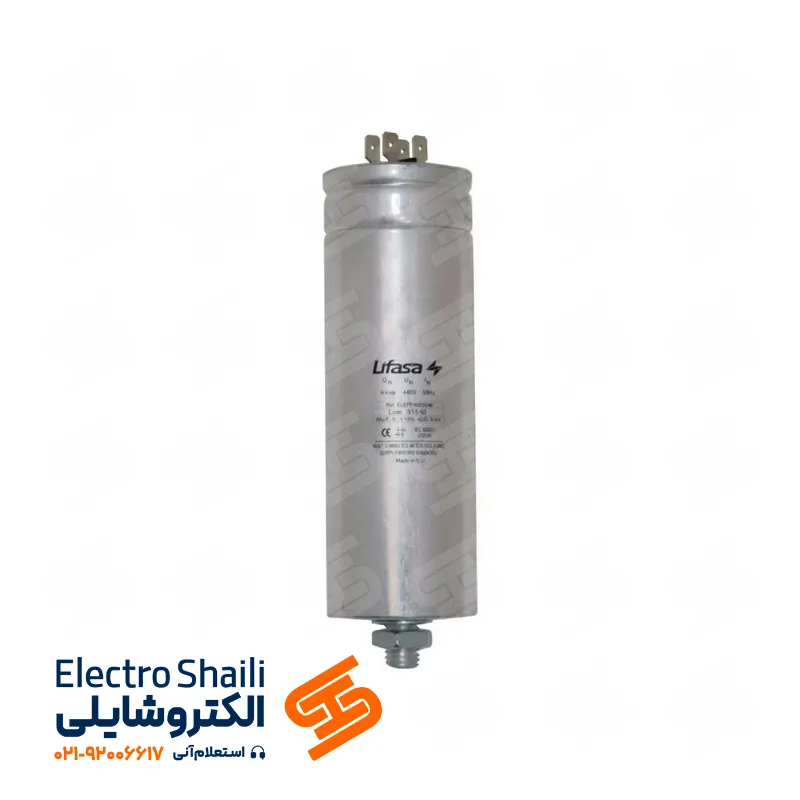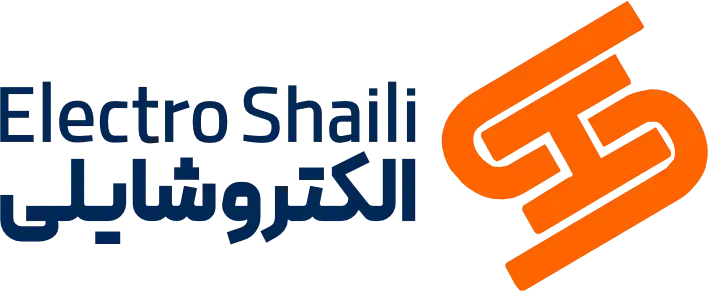CHINT Contactor
The CHINT contactor is an electromechanical component produced by CHINT Electric Company, used in electrical and electronic systems to control electric current and to switch power on and off in circuits. This contactor has electrical contacts that work based on an electromagnetic converter.
CHINT contactors are one of the most important electrical components used in power and telecommunication systems. These contactors, as a switch capable of making and breaking electrical connections, assist in controlling electrical and electronic devices in power generation, transmission, and distribution systems.
The main advantage of CHINT contactors is their ability to withstand high pressure and loads, as well as high safety in industrial environments. Additionally, these contactors can operate in high and low temperatures and in humid and dusty environments.
CHINT contactors are available in a wide range of voltages and currents and can be used as switches to control electrical devices in various systems, including power distribution systems, HVAC systems, industrial air conditioning systems, lighting systems, and safety systems.
Another important feature of CHINT contactors is their ability to connect to various types of cables and electrical wires. Additionally, some models of these contactors have features that help them automatically disconnect in case of faults and defects in electrical systems to prevent hazards from electrical accidents.
Types of CHINT Contactor Series (CHINT)
CHINT NC1 Series Contactor
CHINT contactors, especially models NC1 and NC2, play an important role in heavy-duty industrial applications, especially in the control components of remote motors. Such CHINT contactors with features such as being mountable on Din rail or having holes for installation highlight their versatility in different settings. Customers have the flexibility to choose from various options including the number of poles, coil voltages, and contact configurations based on their specific needs.
The NC1 model is designed for power requirements in the range of 4KW to 45KW and caters to a wide range of industrial applications. For higher power requirements, the NC2 model appears as the preferred choice, offering capacities ranging from 55KW to 335KW.
LED Controls, as a reliable source for contactors, provides a comprehensive range suitable for domestic and commercial applications. The company strives to offer competitive pricing and aims to position its products at below average commercial rates if possible. This commitment makes LED Controls a preferred destination for those seeking quality contactors at cost-effective prices.
Certifications:
CE: Conformité Européene (European Conformity)
KEMA: Certification from a Dutch testing and certification organization
VDE: Verband der Elektrotechnik (Association for Electrical, Electronic, and Information Technologies)
EK: Certification from a Korean organization
UKrSEPRO: Certification from Ukraine
EAC: Eurasian Conformity
RCC: Certification from the Russian certification center
UL: Certification from American laboratories (USA)
Electrical Specifications:
AC50/60Hz: Indicates compatibility with both 50Hz and 60Hz alternating current
690V: Maximum allowable voltage
Up to 95A: Maximum allowable current
Applications:
Making and breaking electrical circuits remotely
Protecting circuits against heavy loads when combined with thermal overload relays
Starting and frequent controlling of AC contactors
Operating Class:
AC-3: Operating class for motor loads, typically AC squirrel-cage motors
AC-4: Operating class for motor loads, especially for frequent start/stop operations
Altitude:
≤2000 meters: Suitable for use at altitudes up to 2000 meters above sea level
Ambient Temperature:
-5°C~+40°C: Practical temperature range
Mounting Category:
Ⅲ: Indicates mounting category according to IEC standards
Installation Conditions:
The angle between the mounting surface and the vertical plane should not exceed ±5 degrees
Standard:
IEC/EN 60947-4-1: Compliant with specified standards for low-voltage switchgear and controlgear – Part 4-1: Contactors and motor starters for building environments (ACS)
CHINT NC2 Series Contactor
Details of using the NC2 contactor for remote motor control with voltages up to 690 volts and 630 amps (AC3) are provided below:
Usage:
It is used for remote control in motor applications.
Current Range:
Voltage range: Up to 690 volts.
Current range: Up to 630 amps (AC3).
Standards:
Compliant with IEC/EN 60947-4-1 standard.
Ambient Temperature:
Operating temperature range: -5 to 40 degrees Celsius.
Magnetic Voltage (AC):
Various magnetic voltages are available: 110V, 127V, 220V, 230V, 380V, 400V.
Auxiliary Contacts:
Auxiliary contacts installed on top.
Time Delay Block:
Time delay block installed on top.
NR2 Thermal Overload Relay:
Can be combined with an additional NR2 thermal overload relay to form a DOL starter (direct on line) setup.
Reversing Contactor:
Can be combined with another contactor to create a reversing contactor arrangement.
Contactor Components:
Consists of an arc extinguishing system, contact system, base frame, and magnetic system (including iron core and coil).
The contact system is of direct action type with double-point allocation.
The lower base frame is made of formed aluminum alloy.
The coil has a closed plastic structure and is combined with an armature as a unified unit.
For user service and maintenance, it can be easily inserted or removed from the contactor.
CHINT NC2 Series Contactor
This information provides a comprehensive view of the specifications, features, and applications of the NC2 series contactor. Its design for robust performance in various motor control scenarios and modular design allows flexibility in setup and maintenance.
Certifications:
NC2-115~800 CE
VDE
UKrSEPRO
EAC
RCC
UL
Applications:
Making and breaking electrical circuits remotely
Protecting circuits against overload when connected with a thermal overload relay
Ambient Temperature:
Operating range: -5°C to +40°C
Altitude:
Maximum altitude: ≤2000 meters
Mounting Category:
Category Ⅲ
Installation Conditions:
Deviation between the mounting surface and the vertical plane should not exceed ±5°
Standard:
IEC/EN 60947-4-1
CHINT NC7 Series Contactor
The NC7 series AC contactors are designed for use in alternating current circuits with a frequency of 50 Hz or 60 Hz. Below are key details and applications:
AC-3/400V: This indicates that the contactor is suitable for use in circuits with operating voltages up to 400 volts under AC-3 category. AC-3 is an operating category specifically related to switching motors under normal operational conditions. Rated voltage and current:
Rated operational voltage: Up to 690 volts.
Rated operational current: Up to 620 amps (under AC-3/400V category).
Applications:
This contactor is primarily used for remote closing and opening of circuits. It can be combined with a suitable thermal overload relay to form an electromagnetic starter. This combination helps protect circuits against extra loads during operation. Suitable for frequent starting and controlling of alternating current motors.
CHINT NC7 Series Contactor
Standard:
The contactor complies with the IEC60947-4-1 standard. This standard is part of the IEC 60947 series, which provides international standards for low-voltage switchgear and controlgear. In summary, the NC7 series AC contactor is designed for managing switching of AC circuits, especially in the field of starting and controlling AC motors. Its compliance with the IEC60947-4-1 standard ensures alignment with international standards. Additionally, its compatibility with thermal overload relays makes it suitable for protecting circuits against extra loads.
Ambient Air Temperature:
Operating range: -5°C to +40°C
The average value in 24 hours should not exceed +35°C
Weather Conditions:
Maximum temperature: +40°C
Relative humidity at this temperature: should not exceed 50%
Higher relative humidity at lower temperatures (for example, up to 90% at 20°C) is permissible
Special measures are required to prevent dew formation due to temperature changes.
Altitude:
Functional altitude should not exceed 2000 meters
Pollution Degree:
Pollution degree: 3
Installation Classification:
Installation classification: Ⅲ
Installation Conditions:
The mounting surface should not deviate more than ±5 degrees from the vertical.
Impact Vibration:
The product should be installed in a place free from significant vibration, impact, and vibration.
These specifications provide a set of environmental and operational conditions under which the product or system is designed to perform optimally. This information is important for users, installers, and maintainers to ensure that the product works as intended initially and maintains its performance and reliability over time.
CHINT NXC Series Contactor
These contactors are primarily used for frequent starting and controlling of alternating current motors. They are suitable for applications where circuit switching over long distances is required or when combined with a thermal overload relay for maximum load, they can be used as an electromagnetic starter.
Key specifications and features of NXC models include:
Compliance with Standards:
GB/T 14048.1/IEC 60947-1
GB 14048.4/IEC 60947-4-1
GB 14048.5/IEC 60947-5-1
GB 21518
Rated Operational Current (Ie): 6 amps to 630 amps
Rated Operational Voltage (Ue): 220 volts to 690 volts
Rated Insulation Voltage:
690 volts (for NXC-06(M) to 100 models)
1000 volts (for NXC-120 to 630 models)
Number of Poles:
3 poles and 4 poles (only for NXC-06M to 12M models)
Coil Control Mode:
AC (for NXC-06(M) to 225 models)
DC (for NXC-06M to 12M models)
AC/DC (for NXC-265 to 630 models)
Installation Method:
NXC-06M to 100: Rail and screw installation
NXC-120 to 630: Screw installation
CHINT NXC Series Contactor
These contactors are versatile and can be used in various industrial applications where reliable remote control of alternating current motors is essential. Adherence to international standards ensures their reliability and safety. The specified range of current and voltage operations makes them suitable for different sizes and power requirements of various motors. Additionally, flexibility in coil control modes allows compatibility with different control systems.
CHINT NC8 Series Contactor
The NC8 AC contactor series is designed for use in AC current circuits with a frequency of 50 Hz or 60 Hz. This contactor is capable of controlling operational voltages up to 690 volts and operational currents up to 500 amps. Its primary uses include making and breaking connections over long distances.
Furthermore, this contactor can be used with a thermal overload relay to create an electromagnetic starter. This combination serves its primary purpose and not only controls the circuit but also provides protection against excessive overloads. The thermal overload relay monitors the current passing through the circuit and if it detects excess current, it turns off the contactor, thereby preventing damage to the equipment and ensuring the safety of the electrical system.
CHINT NC8 Series Contactor
In summary, the NC8 series AC contactor is a multifunctional component that is suitable for various applications and provides remote control capabilities and protection against excessive overloads when used with a thermal overload relay. It is a key element in electrical systems where circuit control and efficient protection are essential.
Applications:
Small AC contactor: 6 to 12 amps
AC contactor: 9 to 500 amps
Number of Poles:
3, 4
Rated Voltage:
690 volts
DC Control Voltage:
12, 24, 48, 110, 125, 220, 250 volts DC
AC Control Voltage:
24, 36, 48, 110, 127, 220, 230, 240, 380, 400, 415 volts AC
Control Voltage Frequency:
50, 60, 50/60 Hz
Rated Current:
6, 9, 12, 18, 25, 32, 38, 40, 50, 65, 80, 100, 115, 150, 170, 205, 265, 300, 400, 500 amps
Accessories:
F4 – Auxiliary Contact Block – Front
F5 – Air Delay Unit
NR2 – Additional Thermal Overload Relay
Standard:
IEC/EN 60947-4-1
This multifunctional contactor supports a wide range of voltages and currents. Accessories provide additional features such as auxiliary contacts, air delay unit, and overload protection. Compliance with the IEC/EN 60947-4-1 standard indicates that this device aligns with international electrical standards.
CHINT NCH8 Silent Contactor
The modular AC contactor NCH8 is an electrical device designed for various applications. Below are details regarding its general specifications and features:
1. General Features:
1.1 Electrical Ranges:
Available in sizes up to 20A, 25A, 40A, and 63A.
Upgraded for operation at voltages of 230V and 400V.
Suitable for AC50/60Hz systems.
1.2 Usage Categories:
Designed for AC-1, AC-7a, and AC-7b usage categories.
Indicates compatibility with a range of applications, including resistive and inductive loads.
1.3 Standard:
Compliant with IEC/EN 61095 standard, ensuring quality and safety in electrical applications.
2. Features:
2.1 Compact and Modular Design:
Compact design for efficient space utilization.
Modular design enhances flexibility in configuration and installation.
2.2 High-Quality Insulating Materials:
High-performance insulating materials are used.
Improves operational safety by ensuring the reliability of insulation used.
2.3 Silent Operation:
Operates silently, providing a noise-free environment.
Collectively, these features make the modular AC contactor NCH8 a reliable and versatile component for electrical systems. Emphasis on insulating material and compact design contributes to increased safety and applicability for various uses. The inclusion of installation guidelines also facilitates easy installation for users.
CHINT NCK3 Mini Contactors
It seems you have information about an electrical component, specifically a contactor with a specific purpose (NCK3). Let me detail the information:
Certifications:
UL (Underwriters Laboratories): This indicates that the product has been tested and certified by UL, a safety organization that sets standards for electrical devices.
Application:
HVACR (Heating, Ventilation, Air Conditioning, and Refrigeration): This contactor is designed for use in HVACR systems common in residential, commercial, and industrial environments.
Usage Categories:
AC-1: Typically deals with non-inductive or slightly inductive loads, such as resistive loads.
AC-8a: This category typically relates to high-breaking capacity motor loads.
Rated Insulation Voltage:
630 volts: This is the maximum voltage for which the contactor insulation is designed for safe operation.
Standard:
UL508: The contactor conforms to the UL508 standard, which includes industrial control equipment.
In summary, the purpose-specific NCK3 contactor is designed for HVACR applications, can be compatible with various load types (AC-1 and AC-8a), has a rated insulation voltage of 630 volts, and is certified to the UL508 standard.
What is a Contactor?
Contactors are devices used in electrical systems to control and switch large and powerful loads. They function as a type of electromechanical switch and are used to control electric current in power circuits.
Contactors consist of several main components, including:
Contact Part: The contact part comprises metal wires that connect when the contactor is activated, establishing electrical connection. These contacts are typically made of copper or metal alloys coated with silver or tungsten to withstand high resistance to wear and corrosion.
Coil Part: The coil part of the contactor consists of an electromagnetic element that is energized by electric current. This solenoid, by creating a magnetic field, is capable of attracting or repelling a movable piece (armature), which opens or closes the contacts.
Movable Part (Armature): The movable part of the contactor includes a stationary piece and a movable piece that moves up or down under the influence of the solenoid. This movement results in the opening or closing of electrical current in the contacts.
Control and Connection Parts: Contactors have control parts that include switches, relays, and protective relays. These parts are responsible for controlling and protecting the contactor’s operation. Additionally, contactors have connections such as terminals and electrical screws used to connect the contactor to other components and electrical circuits.
Protective Part: Some contactors have protective parts that include protective relays. These relays are used to detect and prevent excessive currents, improper voltages, and other abnormal conditions in electrical circuits. They are used to protect equipment and prevent hazards arising from incorrect operation.
Environmental Part: Contactors typically have environmental parts that include the contactor’s body and cover. These parts are used to protect the contactor’s internal components from pollution, impact, dust, and other environmental conditions.
Due to their characteristics, including high current and voltage tolerance, long life, ability to control powerful loads, and usability in industrial and building applications, contactors have various applications in many industries and different programs such as automotive, electrical industries, and so on.
Features of Chint contactors
The features of Chint contactors include:
Structural features: Chint contactors are generally made of metal and have a coating resistant to impact and scratches. Additionally, some models of these contactors have waterproof and dustproof coatings.
Electrical features: Chint electrical contactors are produced in various models depending on the type of usage and the required voltage and current. These contactors have the ability to control high currents and are generally usable in the voltage range of 220 to 690 volts and currents of 9 to 800 amps.
Performance features: Chint contactors have features that help them operate optimally and with high safety. These features include separate poles for input and output, the ability to exchange without opening the circuit, separate contacts for direct control, protection against excess current, reduction of sound and vibration noise, and more.
Overall, Chint contactors, due to their high technical and performance features as well as their safety and protection capabilities, are used in power generation, transmission, distribution systems, and other industries.
Structure of Chint contactors
Chint contactors consist of three main parts:
Main part of the contactor: This part includes main contacts, wires related to the contacts, electric motors, and other components related to the contactor.
Magnetic part of the contactor: This part includes wires related to the solenoid, solenoid, and components related to the magnetic part of the contactor.
Control part of the contactor: This part includes components related to controlling the contactor such as power controls, diodes, terminals, and other related components.
Chint contactors use high-quality materials and comply with international standards in their structure and production. Additionally, these contactors have special designs that effectively improve performance and reduce potential errors.
Operation of Chint contactors
Chint contactors, as an electronic component, are used in control systems to manage electrical loads. In fact, contactors are used to control large and powerful electrical loads. The operation of contactors is such that by pressing the power button, power is supplied to the contactor and ultimately, the contactor is opened and closed. Meanwhile, the internal diagram of the contactor is designed to balance voltage, brake electrical loads, and control the contactor’s temperature. Therefore, Chint contactors are used as a reliable solution in industrial and building systems.
Advantages and disadvantages of Chint contactors
The advantages of Chint contactors include:
Reasonable price: Chint contactors offer a reasonable price compared to other brands while providing decent quality.
Long lifespan: Due to high-quality construction and the use of quality components, Chint contactors have a long lifespan and stable performance.
Resistance to electrical shocks: Chint contactors are suitable for industrial and commercial applications due to their high resistance to electrical shocks.
Simple design and easy usage: Chint contactors, with their simple design and easy usage, are suitable for small commercial and residential applications.
Product variety: Chint contactors are produced in various models and sizes, and they can be customized for specific customer needs.
The disadvantages of Chint contactors include:
Quality of components: Due to the affordable price of Chint contactors, the components may have lower quality, leading to a reduced lifespan of the contactor.
Use of unreliable components: To reduce costs, Chint contactors may use unreliable components, causing performance issues.
Lack of official representatives: Usually, Chint contactors are distributed by local sellers, which may result in the loss of warranty and after-sales services. Electrosha’li Company, as the official representative of Chint Electric Company in Lalazar, offers all the products of this company with company warranty and guarantee of authenticity and quality to customers.
Applications of Chint contactors in industry and residential sectors
Chint contactors are used as one of the essential electrical components in both industrial and residential sectors. Some of the applications of these components in these two areas are:
Applications of Chint contactors in industry:
Used in industrial automation systems, such as CNC machines and industrial robots.
Control and management of HVAC systems, including heating and cooling in industrial buildings.
Management and control of lighting systems, including industrial and urban lighting.
Used in electrochemical, printing and packaging, cutting and engraving machines, and more.
Applications of Chint contactors in residential settings:
Control of lighting systems and illumination in homes and gardens.
Control and management of heating and cooling systems in homes.
Control and management of household appliances such as refrigerators, ovens, washing machines, etc.
Control and management of security systems in homes, such as electric doors, CCTV cameras, etc.
Due to their ability to operate in harsh industrial conditions, high safety, long lifespan, and reasonable price, Chint contactors are used in many industries and homes.
Introduction to Chint Company
Chint Company is one of the largest manufacturers of electrical equipment in China and the world. Established in 1984, the company is recognized as a leader in producing contactors, lockable circuit breakers, frequency converters, and other electrical equipment.
The advantages of Chint Company include high product quality, reasonable prices, and excellent after-sales services. Additionally, the company currently has a network of branches and representatives worldwide and is recognized as one of the top manufacturers of electrical equipment globally.
Products of Chint Company include contactors, lockable circuit breakers, frequency converters, power protectors, logic controllers, and other electrical equipment. These products are suitable for use in various industries such as automotive, electrical industries, energy production systems, construction, and other industries.
Overall, with over 30 years of experience in producing electrical equipment, Chint Company is recognized as one of the largest and top manufacturers of electrical equipment globally.
